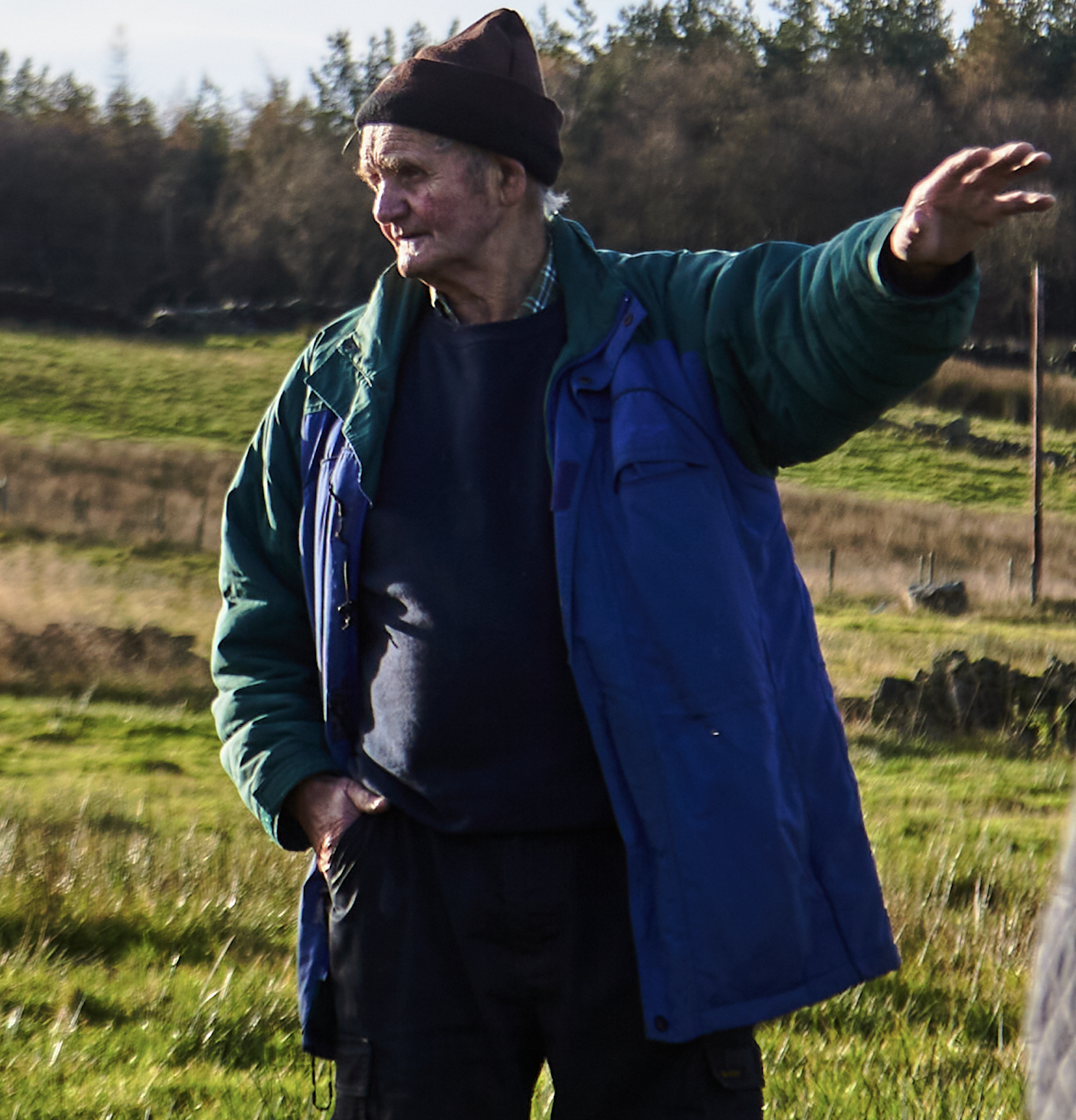
Biohub At Ings Farm NORTH YORKSHIRE 37-Hectare
The Biohub at Ings Farm is a demonstration site aimed to transform an upland grazing farm in North Yorkshire into a regenerative agriculture landscape underpinned by a whole system approach.

From Humble Beginnings
Derek Greenwood, the original farmer, has managed Ings Farm for more than 40 years. The land has been used exclusively for grazing. Our intention is to work with Derek to demonstrate the challenges and opportunities in applying agroforestry and forest gardening designs to silvopasture and silvoarable systems, which we will do by mimicking woodland layers with a mix of native and non-native trees, shrubs, and perennial plants. The farm is also home to 113 sheep which are a key part of our ecosystem design approach.
The project will incorporate agroforestry, and forest garden design methods, and will be focused on accelerating the adoption of regenerative agriculture for upland Yorkshire and beyond, through knowledge sharing between diverse stakeholders.
Over time, we will create a continuous productive landscape to capture carbon, increase biodiversity, and produce food crops that are appropriate in our climate and environment. We plan to incorporate mixed and diverse design patterns across the site, integrating different farming systems, creating a holistic and eclectic approach, which could then be applied to other larger schemes across Yorkshire and the UK.
This novel approach to upland farming for sustainable, resilient food production could provide some of Britain's challenged farmers with a path to profitable living whilst helping fight climate change. With its commercial procurement and foodservice partners, BioHub has access to chefs and sales directors, testing its feasibility and measuring viability.

Biohub At Ings Farm
The BioHub sits within an Area of Outstanding Natural Beauty in North Yorkshire, England, bordering the Yorkshire Dales National Park to the west. We have been working very closely with the Nidderdale AONB team, Yorkshire Water Land & Property team and the Forestry Commission, to ensure our approach does not negatively affect the area but serves to enhance the locality and the larger environment as a whole.

Rethinking the relationship between water and land.
Beyond Nature is a Yorkshire Water initiative which brings together a variety of benefits which can be provided by land resources and the natural environment. These benefits and values are optimised by supporting the farmers who look after this land to implement a holistic approach, integrating the management of land, water and biodiversity, along with other economic and social needs.
Since 2016, they have been working with their farm tenants to get them involved in the Beyond Nature initiative. They currently have 6,314 hectares of land signed up across 16 farms.
Patterns of Design
Creating different patterns of design to support the overall health of the site envelope
-

Cover Crop Design
A cover crop slows the velocity of runoff from rainfall and snowmelt, reducing soil loss due to sheet and rill erosion. Over time, a cover crop regimen will increase soil organic matter, leading to improvements in soil structure, stability, and increased moisture and nutrient holding capacity for plant growth.
-

Perennial Wildflower Design
Wildflowers attract and sustain a substantial number of wildlife species, they are also great composter's and can help to regulate water filtration systems. They support a huge range of different living organisms and do all this while looking pretty glorious too.
-

Swale Design
Swale is a shallow trench dug along the land’s contour, with a berm on the downhill side created with soil from the trench. All points along a contour line are exactly the same height above sea level. A trench along the contour captures water in the landscape, slowing, sinking and spreading it across the contour line. This action reduces erosion and retains water where it is needed.
-

Mycoremediation Design
Mycoremediation is a form of bioremediation in which fungi-based remediation methods are used to decontaminate the environment. Fungi have been proven to be a cheap, effective and environmentally sound way for removing a wide array of contaminants from damaged environments or wastewater.
-

Windbreaks Design
Windbreaks protect a variety of wind-sensitive row, cereal, vegetable, orchard and vine crops, resulting in up to 25% increases in production, controlling wind erosion, and increasing bee pollination. In addition, livestock windbreaks help reduce animal stress and mortality and reduce feed consumption; weight gains of up to 10% and milk production increases of 8-20% can result.
-

Alley Cropping Design
Alley cropping systems which integrate strips of short rotation coppices into conventional agricultural fields are receiving increasing attention. These systems can be used for crops and woody biomass production at the same time, enabling farmers to diversify the provision of market goods.

